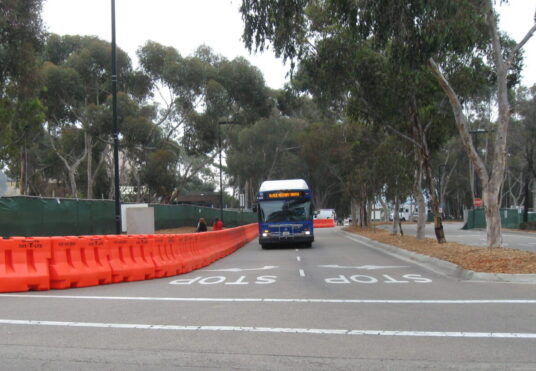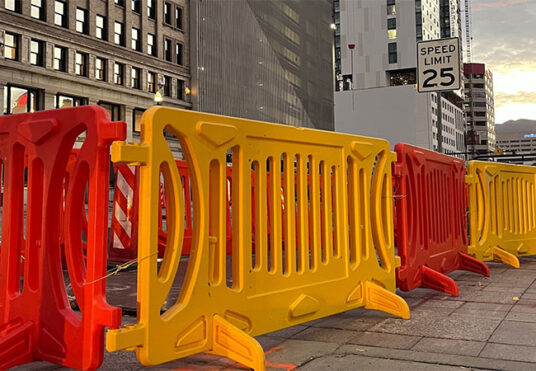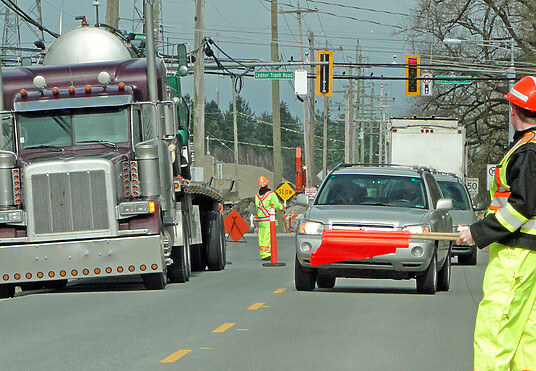Work Zone Barricades: Regulations for Road Traffic Control
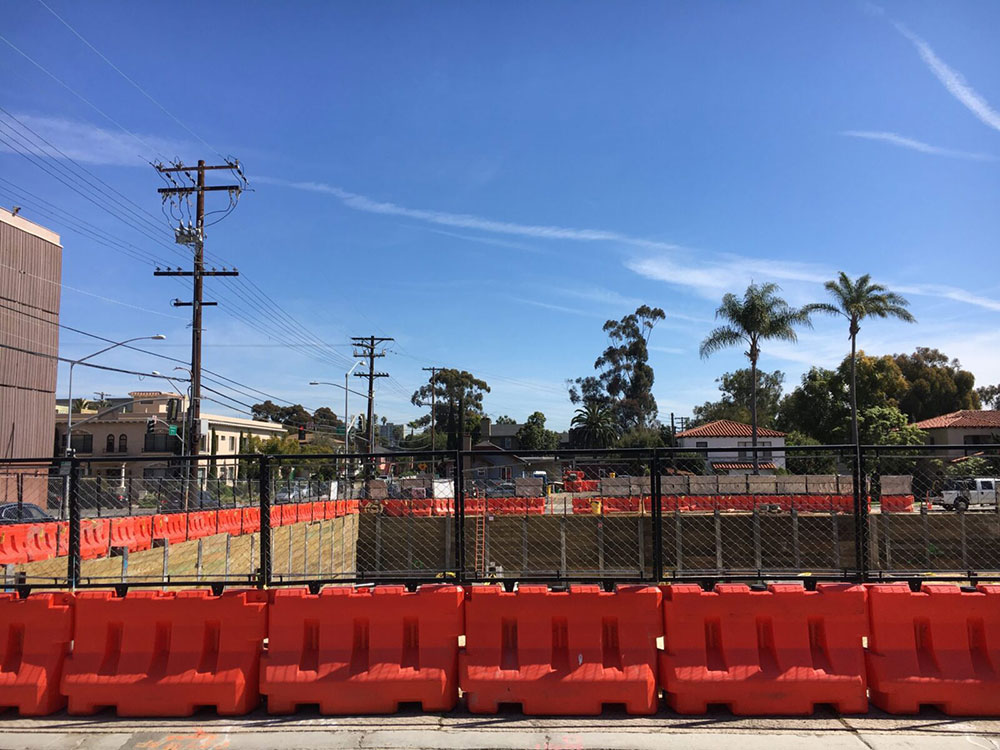
Work zones are essential to maintaining and repairing federal and state highways and roads. However, if not properly designed and implemented, work zones on roadways can be extremely dangerous. Poorly designed work zones can lead to injuries and even fatalities. Business leaders at construction companies have a responsibility to understand and follow the established safety regulations, especially when it comes to installing work zone barricades. Finding the right barricades for a given work zone can be difficult. Not all barricades are suitable for use in high-traffic or fast-moving traffic areas, and it is important to know you are utilizing the right equipment. We’ll explore this topic thoroughly here:
Importance of Safety in Road Traffic Control and Work Zones
According to the Federal Highway Administration (FHWA), 4,400 deaths and 200,000 injuries have resulted from work-zone crashes in the past five years. Drivers are the most severely affected in these types of accidents, but passengers, construction workers, and pedestrians are also at risk. The majority of fatal work zone crashes occurred on roads with speed limits greater than 50 mph.
In an effort to make work zones as safe as possible, the FHWA, along with the American Association of State Highway and Transportation Officials (AASHTO), have implemented safety regulations and standards, including regulations for barriers and barricades for road construction and other work zones.
These standards only apply to roads on the National Highway System, which make up about 4% of the nation’s highways. Yet, these highways support over 40% of travel and luckily many State Department of Transportation agencies are applying the same standards to the state highways within their jurisdiction. As more agencies adopt these standards, the regulations are not only recommended but often required.
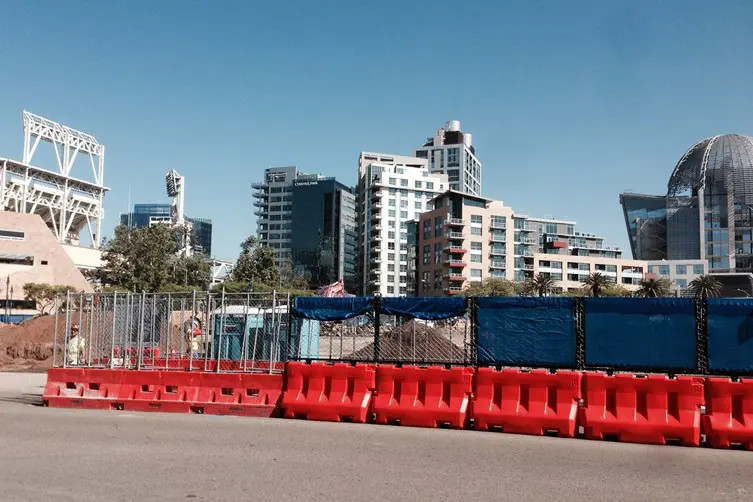
Definition of Work Zone Barricades and Barriers
Construction workers use traffic barriers and barricades in work zones to create a separation between the road and the temporary construction site. Barricades help direct drivers and protect the people in the work zone. According to AASHTO, a barricade is defined as “a device which provides a visual indicator of a hazardous location or the desired path a motorist should take. It is not intended to contain or redirect an errant vehicle.” Alternately, a barrier is defined as “a device which provides a physical limitation through which a vehicle would not normally pass. It is intended to contain or redirect an errant vehicle.”
Different types of traffic barriers and barricades include:
- Longitudinal Barrier: A barrier whose primary function is to prevent penetration and to safely redirect an errant vehicle away from a roadside or median obstacle.
- Median Barrier: A longitudinal barrier used to prevent an errant vehicle from crossing the highway median.
- Roadside Barrier: A longitudinal barrier used to shield roadside obstacles or non-transversable terrain features. It may occasionally be used to protect pedestrians or “bystanders” from vehicle traffic.
- Temporary Barrier: Temporary barriers are used to prevent vehicular access into construction or maintenance work zones and to redirect an impacting vehicle so as to minimize damage to the vehicle and injury to the occupants while providing worker protection.
- Traffic Barrier: A device used to prevent a vehicle from striking a more severe obstacle or feature located on the roadside or in the median to prevent crossover median accidents. As defined herein, there are four classes of traffic barriers: roadside barriers, median barriers, bridge railings, and crash cushions.
Common roadside barricades and barriers also include longitudinal channelizing devices (LCDs) and jersey-shape barricades. These two models in particular come in several different sizes and variations. Though they’re quite versatile, construction companies should make sure to only use barricades that meet the safety standards of their specific work area.
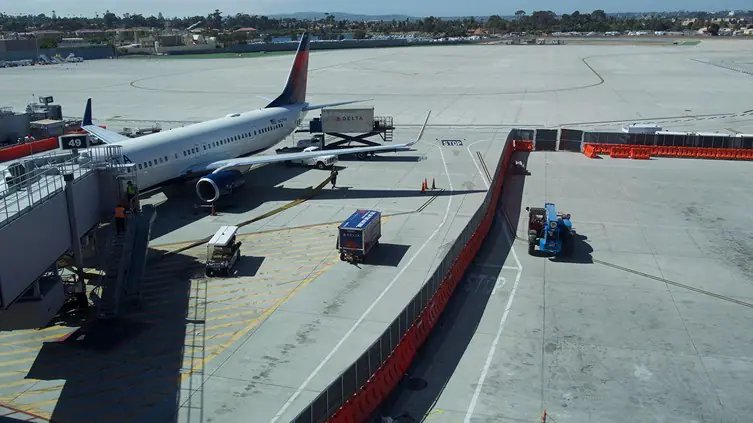
Application of Work Zone Barricades for Road Traffic Control
There are several main functions that barricades fulfill for road construction, including: reducing the likelihood of traffic entering work areas, providing protection for workers, separating two-way traffic, protecting construction, and separating pedestrians from vehicular traffic.
However, before being implemented on a road or highway, the FHWA and the Manual on Uniform Traffic Control Devices (MUTCD) requires that the crashworthiness of work zone barricades be demonstrated. According to AASHTO, “To be crashworthy, longitudinal barriers shall be able to contain, redirect, and shield vehicles from roadside obstacles or work zone areas. Crashworthiness currently is assumed if a portable concrete barrier has met all of the evaluation criteria listed in MASH or NCHRP Report 350 for each of the required crash tests.”
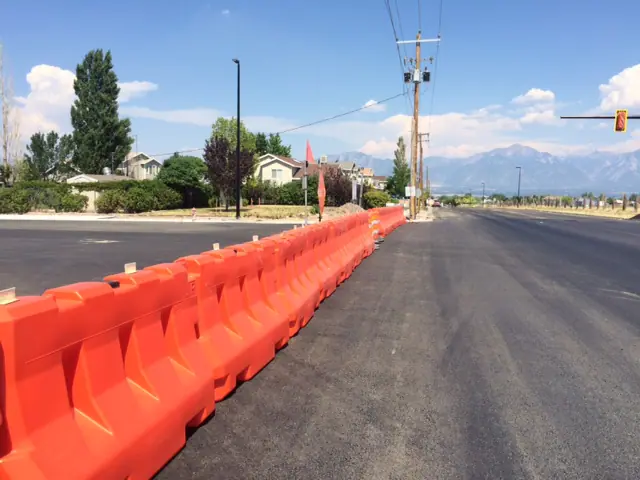
The NCHRP 350 Criteria for Work Zone Barricades
The NCHRP 350 is a guide put together by the National Cooperative Highway Research Program for evaluating the safety performance of work zone barricades. There are up to six test levels that can be selected, which are defined by impact conditions (speed and angle of approach), and the type of test vehicle (ranging in size from a small car to a fully loaded tractor-trailer truck). For general purposes, the lower level tests are appropriate for lower service level roadways and work zones, while the higher level tests are for higher service roadways or at locations that demand a special, high-performance safety feature.
The NCHRP 350 contains four categories of work zone devices:
- Category 1: Small, lightweight devices that are known to be crash-worthy from crash testing and years of experience (cones, tubes, delineators, barrels).
- Category 2: Devices that produce minimal velocity change but may otherwise be hazardous, i.e. windshield penetration (portable sign supports, barricades).
- Category 3: Heavier devices, expected to cause significant velocity change, for which technology has progressed to the point where crash-worthiness has been or can be developed i.e. fixed sign supports, truck-mounted attenuators, and portable crash cushions, portable concrete barriers.
- Category 4: Heavy devices for which reasonable crash-worthy technology does not yet exist (flashing arrow panels/arrow displays, changeable message signs, temporary traffic signals).
NCHRP 350 contains two testing levels for work zone traffic control devices with three different vehicle types. The three vehicle types are 700 kg, 820 kg, and 2000 kg. The two test levels for work zone traffic control devices are test level 2 (TL-2) and test level 3 (TL-3). TL-2 certified devices are used for reduced speeds of 45 mph (70 km/h), while TL-3 devices are used up to 60 mph (100 km/h). The chart below describes the specifications for each test level.
| Test Level | Impact Condition – Vehicle | Impact Condition – Nominal Speed (km/h) | Impact Condition – Nominal Angle (deg) |
| 1 | 820C
700C 2000P |
50
50 50 |
20
20 25 |
| 2 | 820C
700C 2000P |
70
70 70 |
20
20 25 |
| 3
Basic Level |
820C
700C 2000P |
100
100 100 |
20
20 25 |
| 4 | 820C
700C 2000P 8000S |
100
100 100 80 |
20
20 25 15 |
| 5 | 820C
700C 2000P 36000V |
100
100 100 80 |
20
20 25 15 |
| 6 | 820C
700C 2000P 36000T |
100
100 100 80 |
20
20 25 15 |
Overall, understanding and following these regulations for work zones and road traffic control is important and can save money and lives. At OTW Safety, we specialize in designing, manufacturing, and selling quality roadside construction barricades. We vigorously test our products and ensure they meet the highest safety standards possible. Our plastic barricades also provide many advantages, like portability and visibility, that other types of barricades lack. If you have any questions about traffic barricades for your upcoming job, contact us today and see how we can help you!
